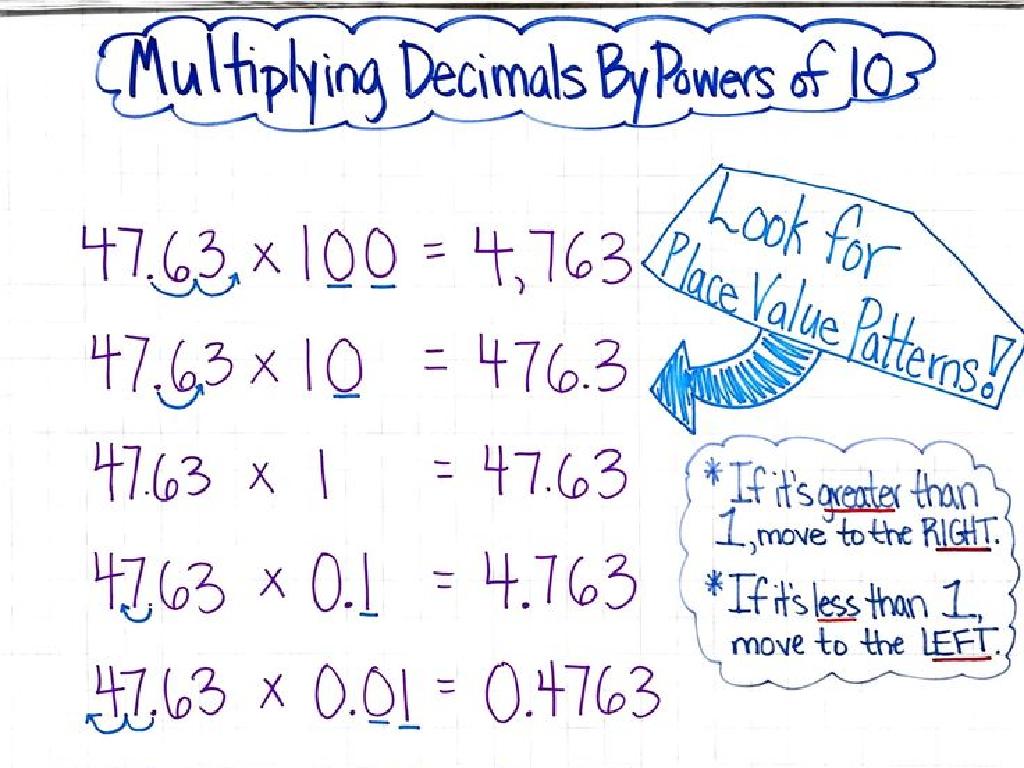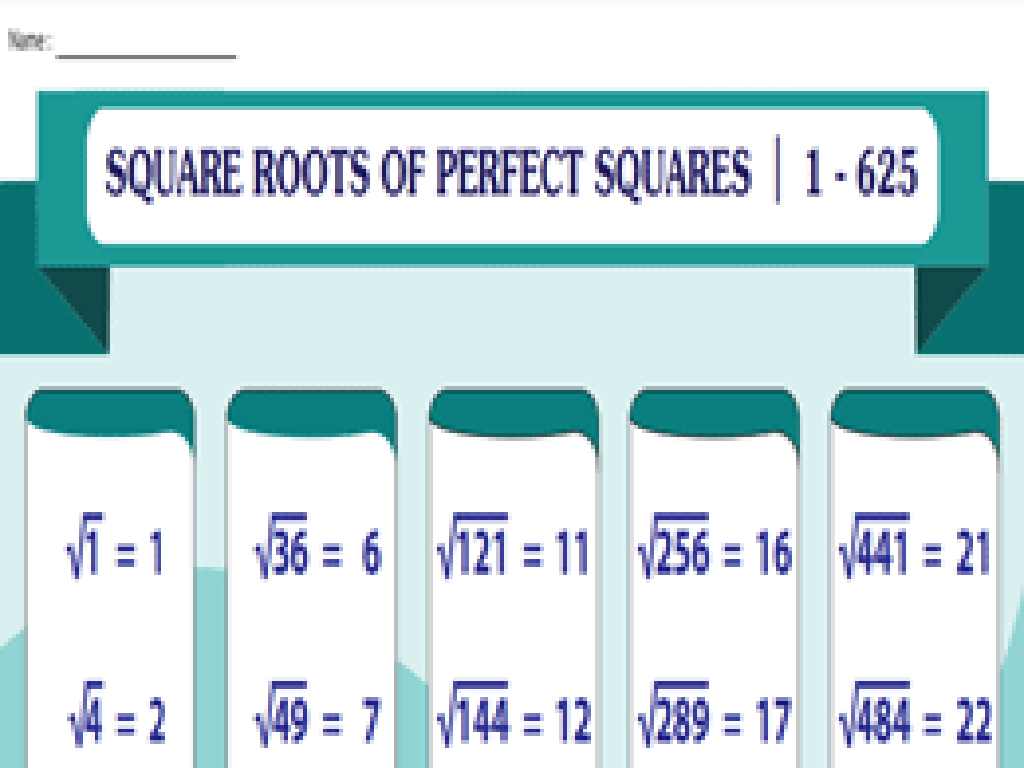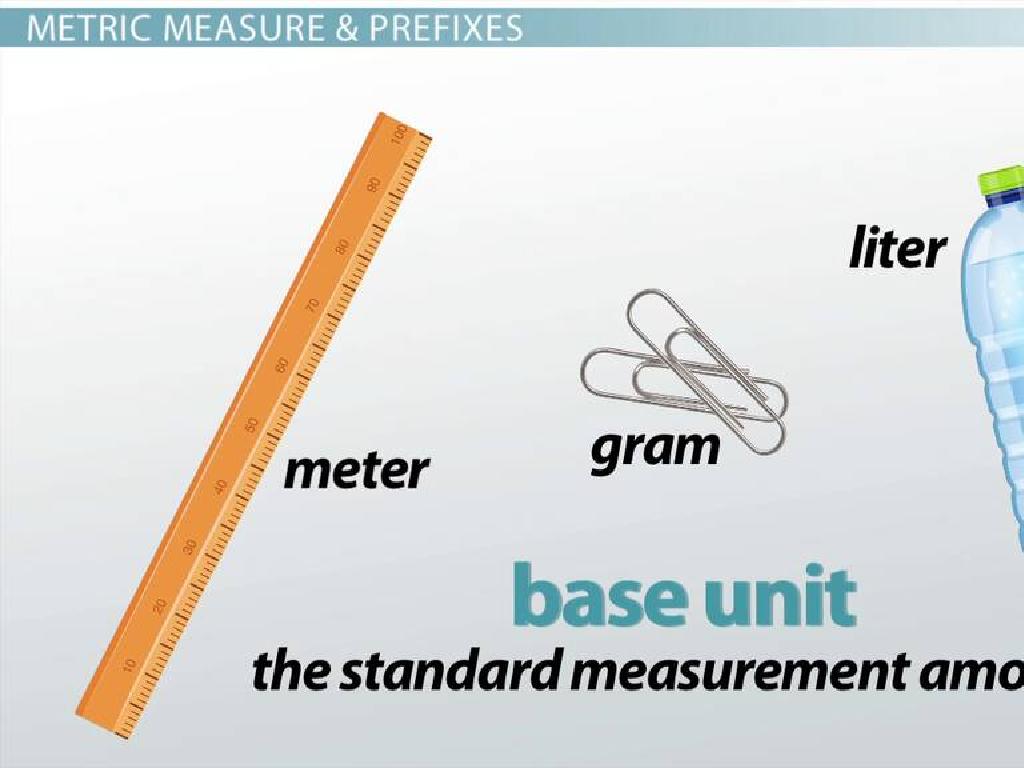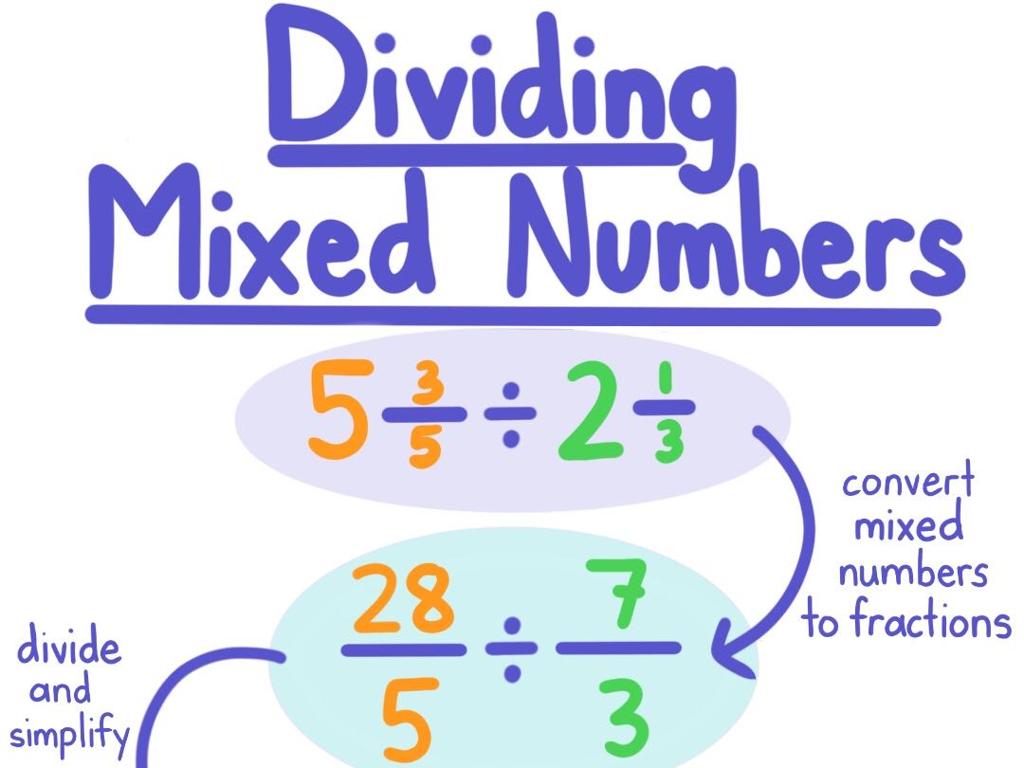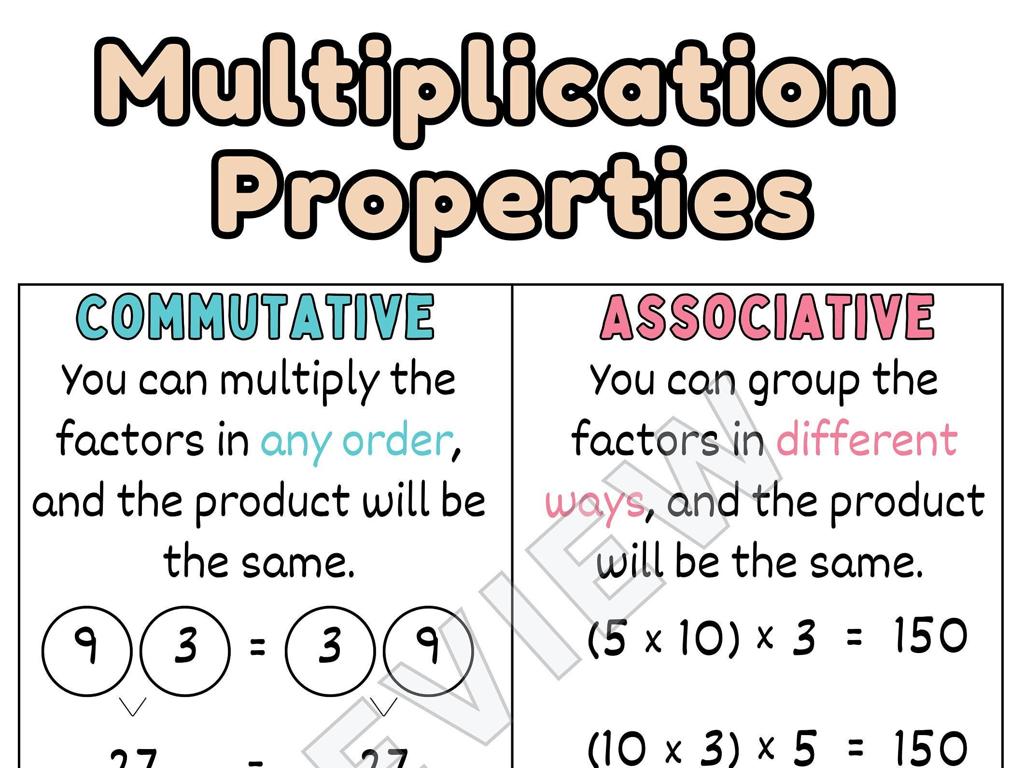Compare And Convert Metric Units Of Length
Subject: Math
Grade: Fifth grade
Topic: Metric Units Of Measurement
Please LOG IN to download the presentation. Access is available to registered users only.
View More Content
Welcome to Metric Measurements!
– Understanding metric units
– Metric units include meters (m), centimeters (cm), and millimeters (mm).
– Importance of measuring length
– Measuring length helps in daily tasks like buying fabric.
– Exploring meters and centimeters
– A meter is the basic unit of length, while a centimeter is one-hundredth of a meter.
– Learning about millimeters
– A millimeter is one-thousandth of a meter, used for small measurements.
|
This slide introduces students to the concept of metric units of length, which are part of the international system of units used globally. Understanding these units is crucial for students as they are widely used in science, construction, and everyday life. Emphasize the practicality of measuring length in various scenarios, such as shopping or crafting. Use visual aids to help students differentiate between meters, centimeters, and millimeters, and provide examples of objects that correspond to these measurements to solidify their understanding. Encourage students to bring rulers or measuring tapes to the next class to practice converting between units.
Understanding the Metric System
– Global measurement system
– Based on multiples of 10
– Each unit is 10 times larger or smaller than the next
– Common units: m, cm, mm
– Meter is the base unit for length in the metric system
– Easy conversion techniques
– Learn to convert between units using multiplication or division
|
The metric system is a decimal-based system of measurement used by most countries worldwide. It’s designed for simplicity with units that are based on powers of 10, making conversions straightforward. For example, there are 100 centimeters in a meter and 1000 millimeters in a meter, so converting between these units is as simple as moving the decimal point. This slide will introduce students to the concept of the metric system, focusing on length and the most common units they will encounter: meters, centimeters, and millimeters. Emphasize the ease of conversion due to the system’s base-10 structure. Provide examples of converting between units, such as showing how 2.5 meters equals 250 centimeters or 2500 millimeters.
Metric Units of Length: Meters, Centimeters, and Millimeters
– 1 meter equals 100 centimeters
– 1 centimeter equals 10 millimeters
– Use a meter stick for understanding
– A meter stick helps visualize the lengths and the relationship between meters, centimeters, and millimeters.
– Conversion practice
– Convert between units using the given equivalences.
|
This slide introduces students to the basic metric units of length. It’s crucial for them to understand that these units are part of a decimal system and are based on the number 10, making conversion straightforward. A meter stick can be a powerful visual aid to help students grasp the concept of length and the scale of meters, centimeters, and millimeters. Encourage students to bring a ruler or a meter stick to class for a hands-on activity. For homework, they could measure objects at home and practice converting those measurements between meters, centimeters, and millimeters. This will reinforce their understanding of the size of each unit and how to convert between them.
Converting Metric Units of Length
– Convert meters to centimeters
– To convert meters to centimeters, multiply by 100.
– Convert centimeters to millimeters
– To convert centimeters to millimeters, multiply by 10.
– Practice with conversion examples
– Example: Convert 2 meters to centimeters (2m x 100 = 200cm).
|
This slide is aimed at teaching students how to convert between different metric units of length. Start by explaining that the metric system is based on multiples of ten, making conversion straightforward. For meters to centimeters, since a meter is 100 centimeters, you multiply by 100. For centimeters to millimeters, as a centimeter is 10 millimeters, you multiply by 10. Provide students with several examples to practice these conversions, ensuring they understand the process. Encourage them to set up conversion equations and solve them. You can also introduce the concept of ‘moving the decimal point’ as a visual way to understand multiplying by 10 and 100.
Real-life Examples: Metric Measurements
– Measuring a pencil in centimeters
– Use a ruler to measure the pencil’s length and record in cm.
– Height of a door in millimeters
– Multiply the door’s height in meters by 1000 to convert to mm.
– Importance of accurate measurement
– Accurate measurements are crucial in building, sewing, and buying the right amount of materials.
|
This slide aims to help students understand the application of metric units of length in everyday life. Start by demonstrating how to measure a pencil using a ruler, emphasizing the unit of centimeters. Then, explain how to convert larger measurements, such as the height of a door, from meters to millimeters by multiplying by 1000. Discuss with the class why it’s important to measure accurately, using examples such as ensuring pieces fit when building something, cutting the correct amount of fabric for a sewing project, or purchasing the right amount of wallpaper for a room. Encourage students to think of other situations where accurate measurement is essential.
Class Activity: Measure and Convert!
– Measure objects with rulers
– Record in meters, cm, and mm
– Convert between units
– Use conversion: 1 m = 100 cm = 1000 mm
– Compare your results
|
This activity is designed to give students hands-on experience with metric units of length. Divide the class into small groups and provide each group with rulers that measure in meters, centimeters, and millimeters. Have them measure various objects within the classroom and record their findings. Then, guide them through the process of converting these measurements into different units and comparing their results with those of other groups. Possible activities include measuring the length of a desk, the width of a book, or the height of a chair. Encourage students to discuss why different units might be more appropriate for different measurements and to understand the relationship between the units.
Quiz Time: Metric Conversion Mastery
– Engage in a quick measurement quiz
– Convert measurements between units
– Change centimeters to meters, meters to kilometers, etc.
– Jot down your conversion answers
– Write your answers on paper
– Discuss answers with classmates
– Be ready to explain how you got them
|
This slide is designed to test the students’ understanding of converting metric units of length. The quiz should include a variety of conversion problems that require students to apply their knowledge of the metric system. For example, converting 100 centimeters to meters or 3 kilometers to meters. Encourage students to show their work on paper and be prepared to share their answers with the class. This will not only help reinforce their learning but also allow them to learn from each other. Provide guidance on how to convert units by multiplying or dividing by powers of 10 and remind them of the importance of place value in the metric system. After the quiz, facilitate a discussion where students can compare answers and methods used.
Conclusion: Mastering Metric Lengths
– Review of metric conversion
– Importance of measurement skills
– Knowing how to measure helps in daily life, like cooking or crafting
– Homework: Measure 5 home items
– Choose items, measure them, and convert between mm, cm, m, and km
– Conversion practice
|
As we wrap up today’s lesson on metric units of length, let’s recap the key points of converting between millimeters, centimeters, meters, and kilometers. Understanding these conversions is not just for math class it’s a skill you’ll use in real life, whether you’re cooking, building something, or just comparing distances. For homework, find five items around your home, measure their length, and practice converting those measurements into different metric units. This will help reinforce today’s lesson and give you a practical understanding of how these measurements are used. Remember, practice makes perfect, so keep converting and you’ll be a metric master in no time!

